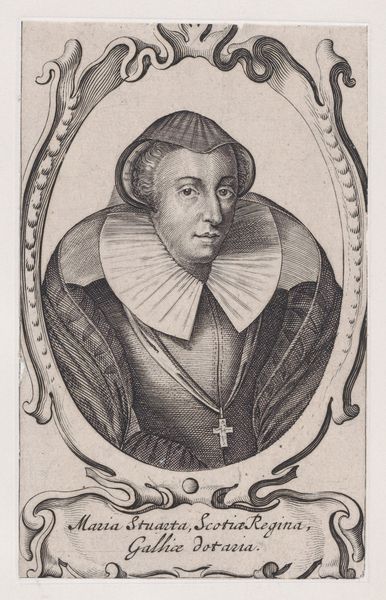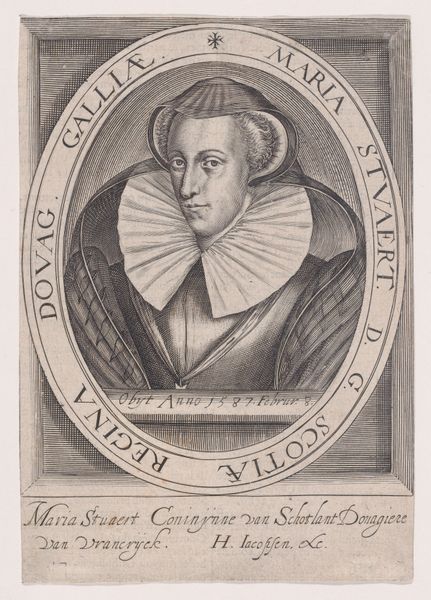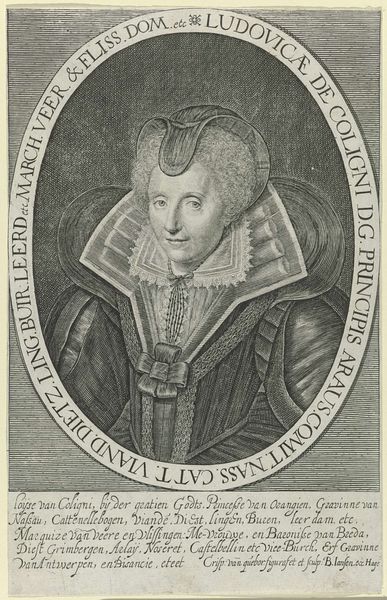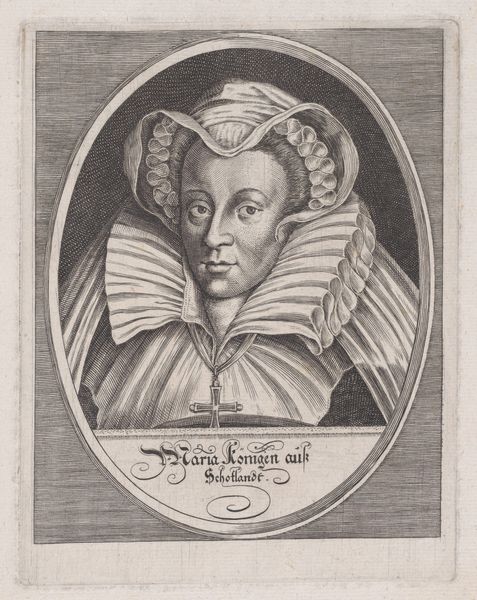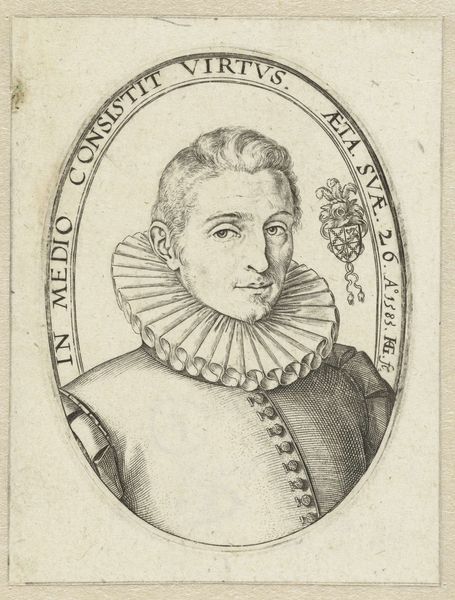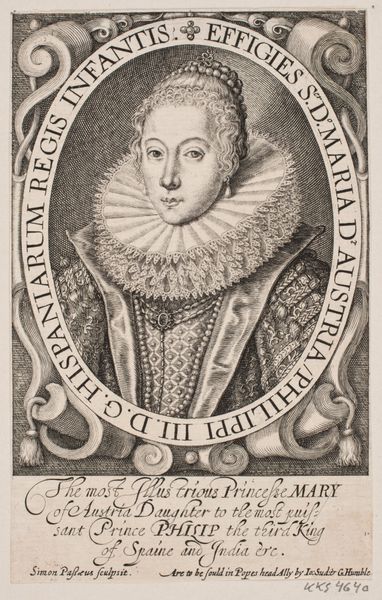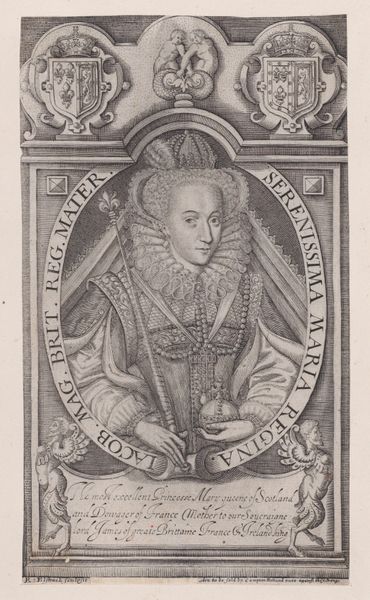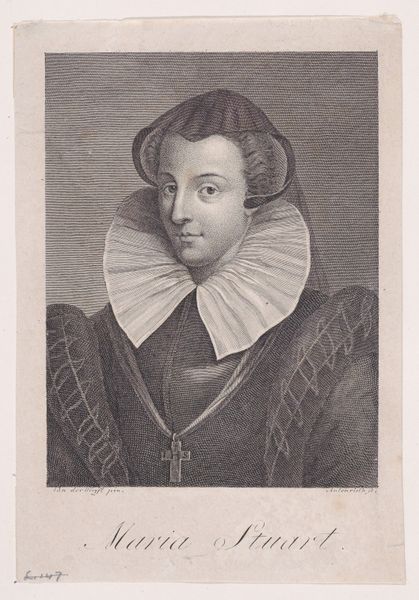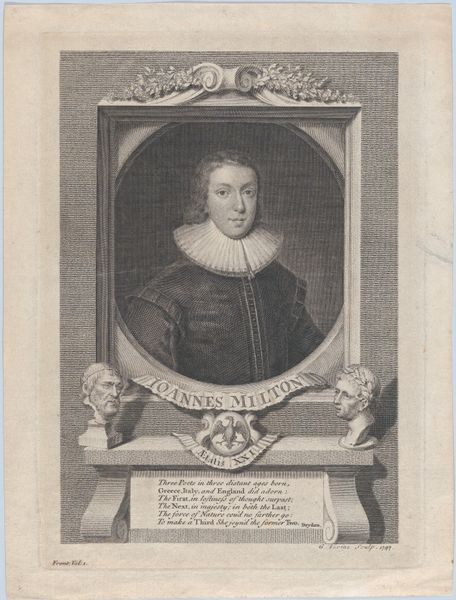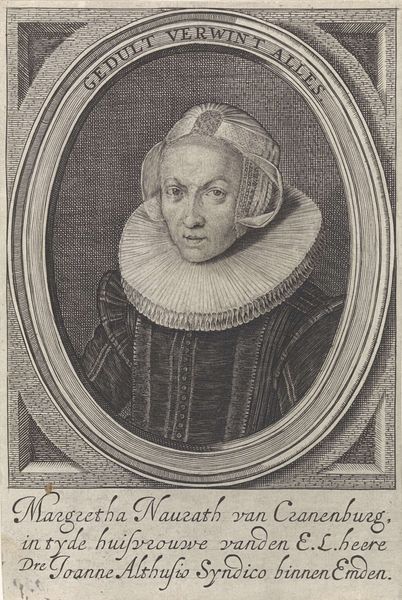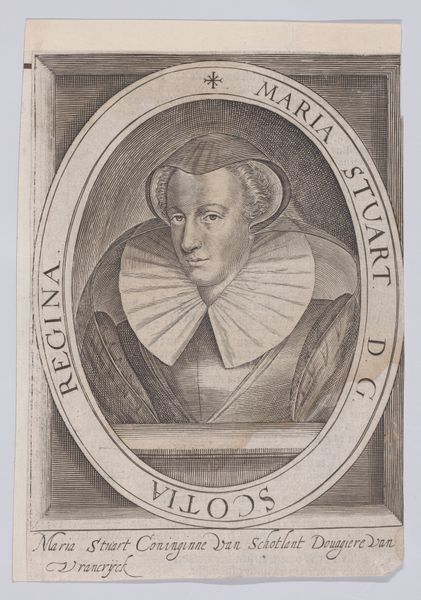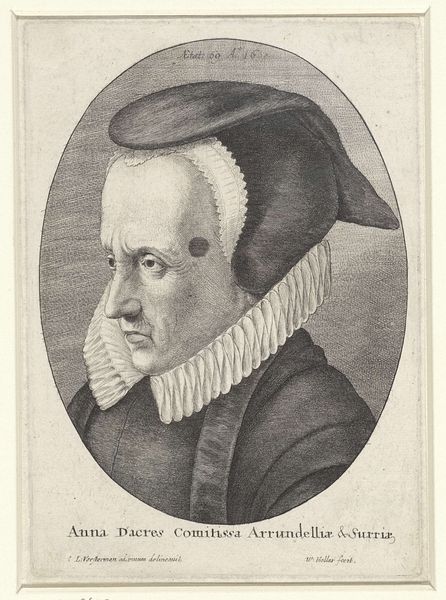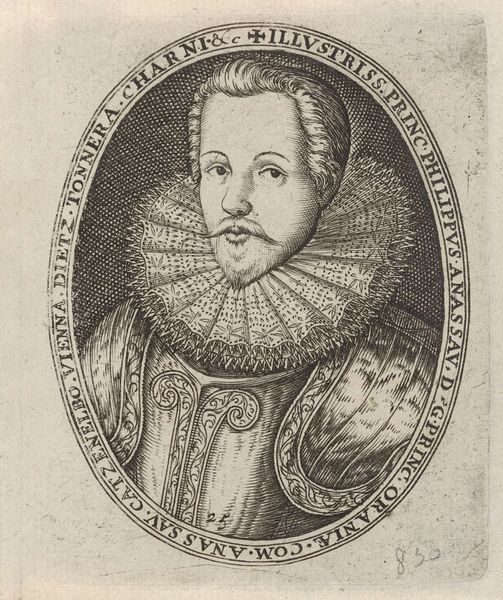
Mary, Queen of Scots (from "Famiani Stradae Romani E Societate Jesu De Bello Belgico Decas Secunda," folio 466) 1650
0:00
0:00
drawing, print
#
portrait
#
drawing
#
imaginative character sketch
#
facial expression drawing
# print
#
pencil sketch
#
old engraving style
#
caricature
#
personal sketchbook
#
portrait reference
#
limited contrast and shading
#
men
#
sketchbook drawing
#
portrait drawing
Dimensions: Sheet: 4 1/2 × 2 5/8 in. (11.4 × 6.6 cm)
Copyright: Public Domain
Editor: Here we have a print from 1650, "Mary, Queen of Scots," part of Famiano Strada's "De Bello Belgico." The crisp lines and formality give it such a regal feel, even with the slight awkwardness of the perspective. As someone just beginning to understand art, how should I look at this piece and better understand what was happening? Curator: Considering the era and its role within a historical text, this image served a clear propaganda function. "De Bello Belgico" details the Dutch Revolt. How do you think the inclusion of Mary, Queen of Scots, a figure executed decades prior, served Strada's broader political and religious narrative? Editor: So, it's not necessarily about *her*, but about what she represents to the intended audience? Perhaps aligning the Dutch cause with a historically controversial figure who was seen as a martyr by some? Curator: Exactly. Consider how her portrayal, even idealized, tapped into existing sentiments regarding monarchy, religious conflict, and foreign interference. Who controlled the means of production for prints like these? How did that affect what got distributed and what was seen? Editor: Okay, so it makes me think about who commissioned this. Clearly someone with a strong opinion, maybe the Catholic Church itself, given the author. I'd guess prints at the time were much more important as a tool of soft power and less a representation of some "pure" artistic impulse. Curator: Precisely! We have to consider that this portrait participated in the early modern “image wars.” Now, look closer; do you notice anything about the details of her garments or adornments, details that may allude to these specific conflicts? Editor: Looking closely, the modesty of her clothing and stark, almost severe, headdress suggests a sense of pious restraint. Maybe this simplicity, this austere style, was to paint her as virtuous or as a figure who opposed the Protestant Reformation. Curator: A good observation! In the public memory of her time, images played a crucial part in establishing views of powerful political and religious leaders, especially controversial ones. It also highlights how strategic deployment of portraits reinforced political messages during times of immense conflict. Editor: Wow, I never thought of art history as image wars. I am seeing the artist not just as making aesthetic choices but political ones too! Thanks!
Comments
No comments
Be the first to comment and join the conversation on the ultimate creative platform.
